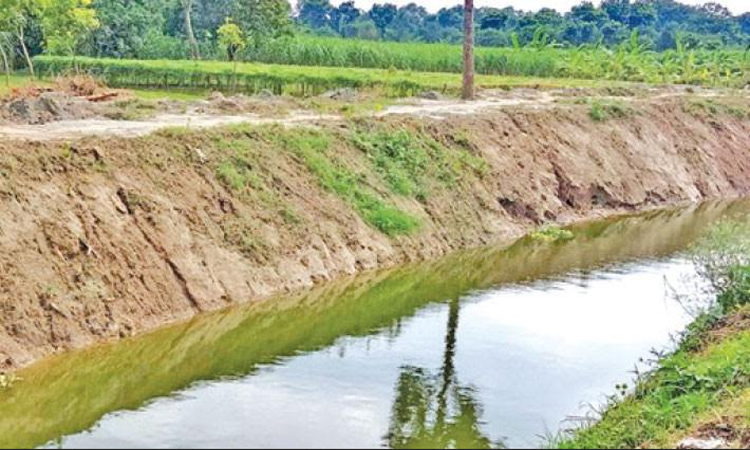News Flash
News Flash

RAJSHAHI, April 9, 2025 (BSS) - Surface water conservation is of the essence of mitigating the water crisis, which is being deepened due to the deficit of rainfall in the region, particularly its vast Barind tract.
Jahangir Alam Khan, a development activist who is working to mitigate the water crisis in the Barind region, said inadequate rainfall has been escalating the crises in the region for the last couple of decades.
He said prospects of boosting irrigation by surface water are very bright in the area as it has scores of natural water bodies that remain in uncared and derelict conditions.
Khan mentioned that there are around 10,000 ponds, 200 canals and 10 other big-sized waterbodies in the barind areas including Beelbhatia, a vast water body and wetland of around 6,388 acres, at Bholahat upazila in Chapainawabganj.
Tens of thousands of hectares of farmlands can be irrigated round the year by using conserved water from the beel if it is re-excavated.
There is another four to five-kilometer-long water body at Rohanpur in Gomastapur upazila of the same district. If it is re-excavated, around 10,000 hectares of land of 25,000 farmers can be brought under surface water irrigation.
Apart from this, the two-kilometer Chowdala-Boalia canal remained in derelict condition for a long time. Around 150 hectares of farmlands can be irrigated with water from the canal if it is renovated.
Transformation of all the existing underground water-based irrigation into surface water can be crucial in lessening the gradually mounting pressure on groundwater.
Khan said that the gradually declining water resources are posing a serious threat to the living and livelihood conditions of the marginalized and other less-income group families in the water-stressed area.
He, however, said rainwater harvesting can be indispensable for easing the living and livelihood conditions of people by mitigating the water crises in the Barind area.
Time has come to extend necessary knowledge and devices to the communities to make them capable of availing the opportunities of rainwater harvesting technologies.
Meanwhile, Barind Multipurpose Development Authority (BMDA) has been working to spread surface water irrigation in the water-stressed Barind area, as it has implemented a project titled "Small irrigation through pond re-excavation and surface water augmentation" recently.
Surface water irrigation appeared to be the best tool to mitigate the gradually mounting pressure on underground water in the drought-prone Barind area, which has scores of natural water bodies that currently remain in derelict condition.
BMDA Chairman Dr Muhammad Asaduzzaman said the five-year project has been implemented in 43 drought-prone upazilas in Rajshahi, Chapainawabganj, Naogaon, Bogura, and Natore districts, costing around Tk128.19 crore.
The ever-largest irrigation-providing state-owned entity in the country's northwest region brought around 715 more derelict ponds and 10 other big closed water bodies under re-excavation.
The water bodies' re-excavation was aimed at making them suitable for both irrigation and household use in the region, Dr Zaman said.
The project has created the scope of providing irrigation to 3,058 hectares of farming fields, yielding around 18,348 tonnes additional crops a year.
Apart from this, prospects of producing 1,088 tonnes of additional fish were created with the conservation of water in these re-excavated water bodies.
The project has also been reducing the gradually mounting pressure on underground water and encouraging people to boost the farming of fish and ducks in the conserved water, Rashid said.
Earlier, the BMDA had re-excavated 3,098 ponds, 2,011-kilometre canal, and 413 dug-wells through the implementation of other projects to promote surface water-based irrigation until June, the official said.
He said, "We have a plan of elevating the surface water-based irrigation to 30 percent from the existing ten percent by 2030 to lessen the gradually mounting pressure on underground water."